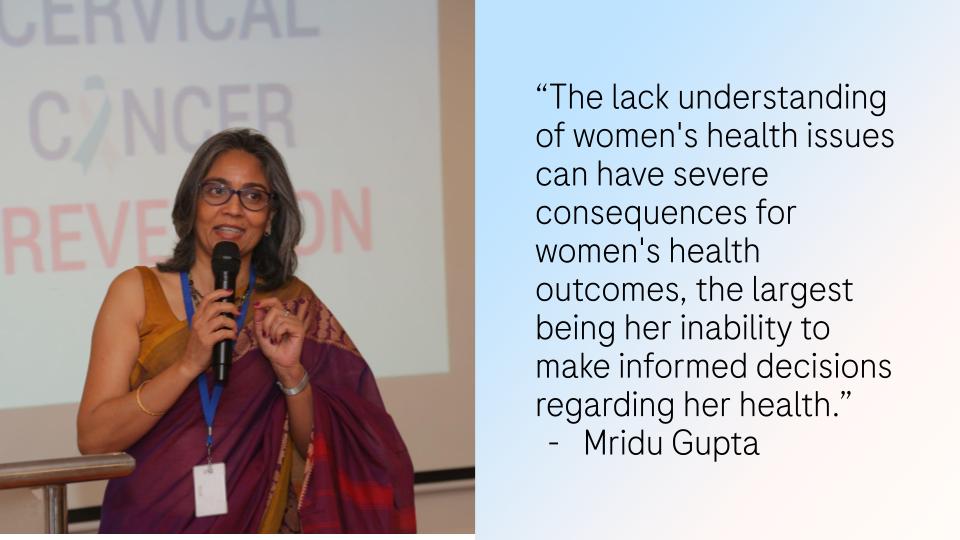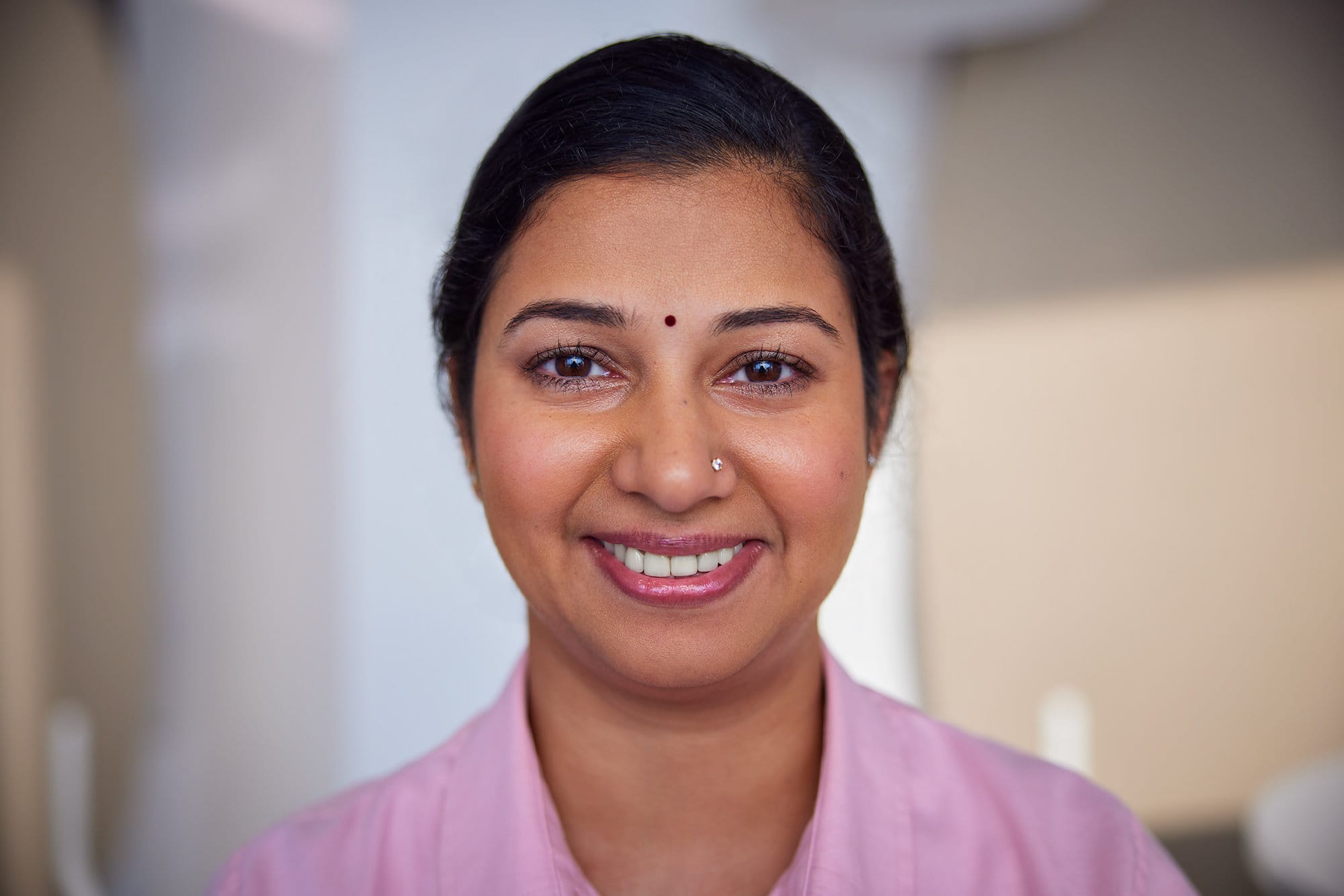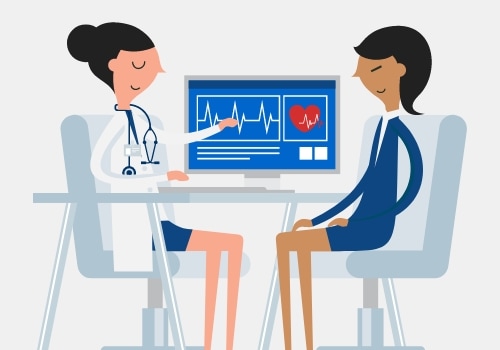Gender-based inequities in healthcare is a phenomenon a cross the world. Hear from Mridu Gupta, CEO of Cancer Awareness, Prevention and Early Detection (CAPED), as she assesses the impact these gaps in healthcare have on women’s lives in India.

Globally, the health of women has always been a topic of concern, and there have been various discussions on issues related to it. However, women’s health is not given enough priority in society, despite several initiatives. This phenomenon is widespread in both developing and developed countries. India, the second-most populous country in the world, is still facing gender-based inequities in women’s health, despite being a rapidly developing nation. These inequities range from limited access to healthcare to cultural norms that restrict women’s autonomy and decision-making power.

There is a significant lack of knowledge among Indian women about non-communicable diseases (NCDs), including cardiovascular disease, diabetes, and cancer. Similar findings were revealed in a study conducted in India, where 60% of women were unaware about heart attacks or strokes; knowledge about breast (27.3%) and cervical cancer (11.5%) was even poorer.1 A 2020 study undertaken by CAPED across 21 cities in India to assess awareness levels on cervical cancer found similar results where only 46% women had heard of cervical cancer and 23% of those thought it was a cancer of the neck.2 This lack of awareness and understanding of women’s health issues can have severe consequences for women’s health outcomes, the largest being her inability to make informed decisions regarding her health.
The lack of awareness extends to policymakers and healthcare providers too, as many tend to view women’s health concerns as secondary or limited to reproductive health. However, women’s health encompasses a broad range of issues, including mental health, cardiovascular disease, cancer, and autoimmune diseases, among others. For example, the American Heart Association reports that women are more likely to die from a heart attack than men, in part because their symptoms are often misdiagnosed or dismissed as anxiety or stress.3 Misdiagnosis is a common complaint among women above 40 years of age.
Healthcare policy is also greatly affected by the significant gap in the research and funding for women’s health issues in India. This lack of representation can lead to gender-based differences in drug efficacy and safety, as well as delays in the identification of potential adverse effects in women. The disparity in funding is reflected in the lack of attention given to women’s health issues in healthcare policy and planning. This gap in healthcare policy is the reason we have no women specific healthcare schemes or government health insurance available in India.
A study conducted by experts from India and Harvard University reveals that Indian women suffer gender bias while accessing healthcare. The study examined records of over 2.3 million women outpatients and found that only 37% women got access to healthcare as compared to 67% men.4 In low-income families where the woman culturally takes over the caregiver’s role, the lack of a women-specific health fund puts her chances of access to healthcare lower than the provider or male members of the family. Limited access to healthcare facilities and barriers such as language, lack of education, and poverty are the suggested reasons. In India, the gender gap in healthcare is a significant issue.

In an eco-system where policies and planning do not support women healthcare and the woman herself is either uninformed or not free to make decisions regarding her own health, it is obvious that health outcomes for women will suffer. According to a study conducted by the National Family Health Survey in India, only 12% of women aged 15-49 make decisions about their own health, compared to 34% of men in the same age group.5 This suggests that cultural norms and gender roles play a significant role in women’s decision-making power regarding their health. These findings indicate the detrimental impact of cultural norms and gender roles on women’s health in India.
To address these issues, it is crucial to increase awareness and understanding of women’s health issues, conduct more research and funding for women’s health, address the gender gap in healthcare, and ensure that women of all backgrounds have access to quality healthcare services. Empowering women to make informed decisions about their health and addressing cultural norms that prioritise men’s health over women’s is also essential for improving women’s health and achieving gender equality in healthcare.
References:
1 Journal of Global Oncology no. 5 (2019) 1-10. Study of Knowledge, Attitudes, and Practices Toward Risk Factors and Early Detection of Noncommunicable Diseases Among Rural Women in India. Retrieved from:https://ascopubs.org/doi/10.1200/JGO.18.00181
2 CAPED India. (2020) Understanding Cervical Cancer Awareness in India. Retrieved from: https://www.capedindia.org/understanding-cervical-cancer-awareness-in-india-national-level-survey-by-capedindia/?utm_source=newsletter&utm_medium=email&utm_campaign=cervical
3 American Heart Association. (n.d.). Heart Attack Symptoms in Women. Retrieved from https://www.heart.org/en/health-topics/heart-attack/warning-signs-of-a-heart-attack/heart-attack-symptoms-in-women
4 Deutsche Welle (DW). (2019)Access to health care difficult for most Indian women. Retrieved from: https://www.dw.com/en/access-to-health-care-a-distant-dream-for-most-indian-women/a-50108512
5 Ministry of Health and Family Welfare, India. (2056-16) National Family Health Survey (NFHS-4). Retrieved from: http://rchiips.org/NFHS/NFHS-4Reports/India.pdf














